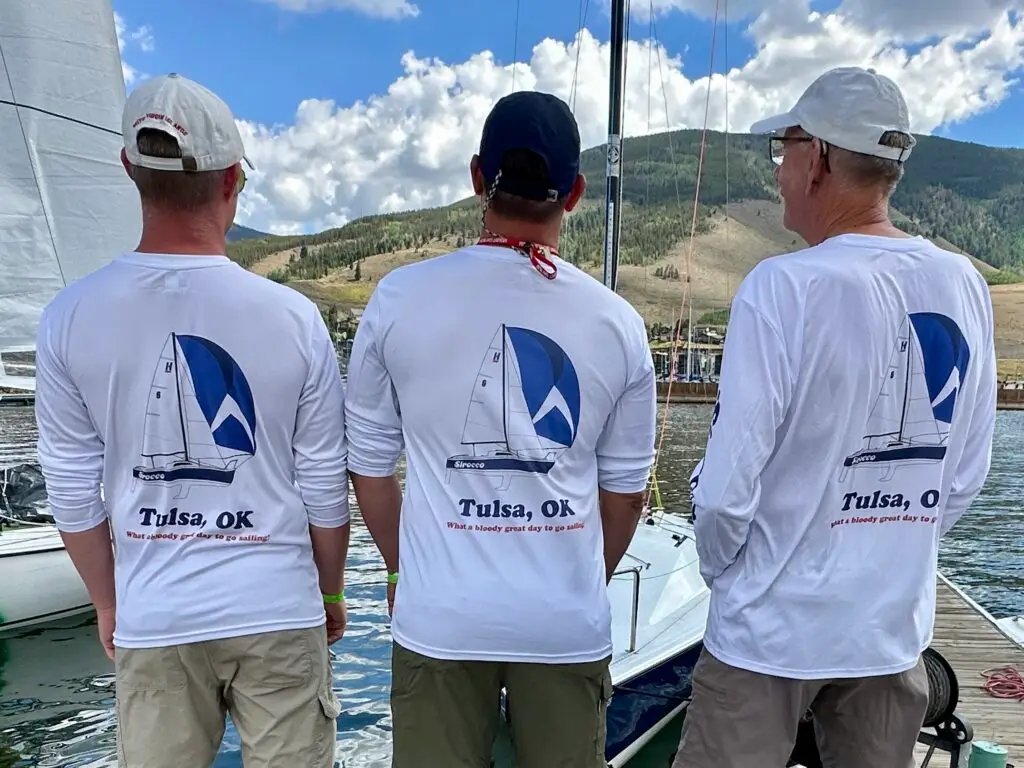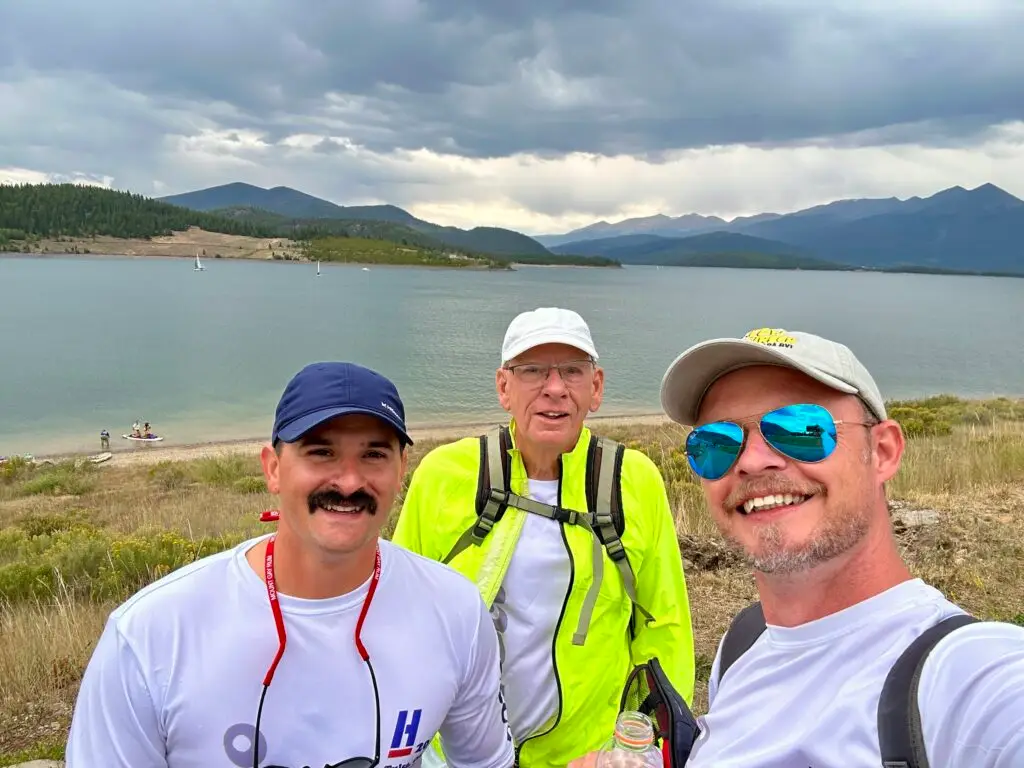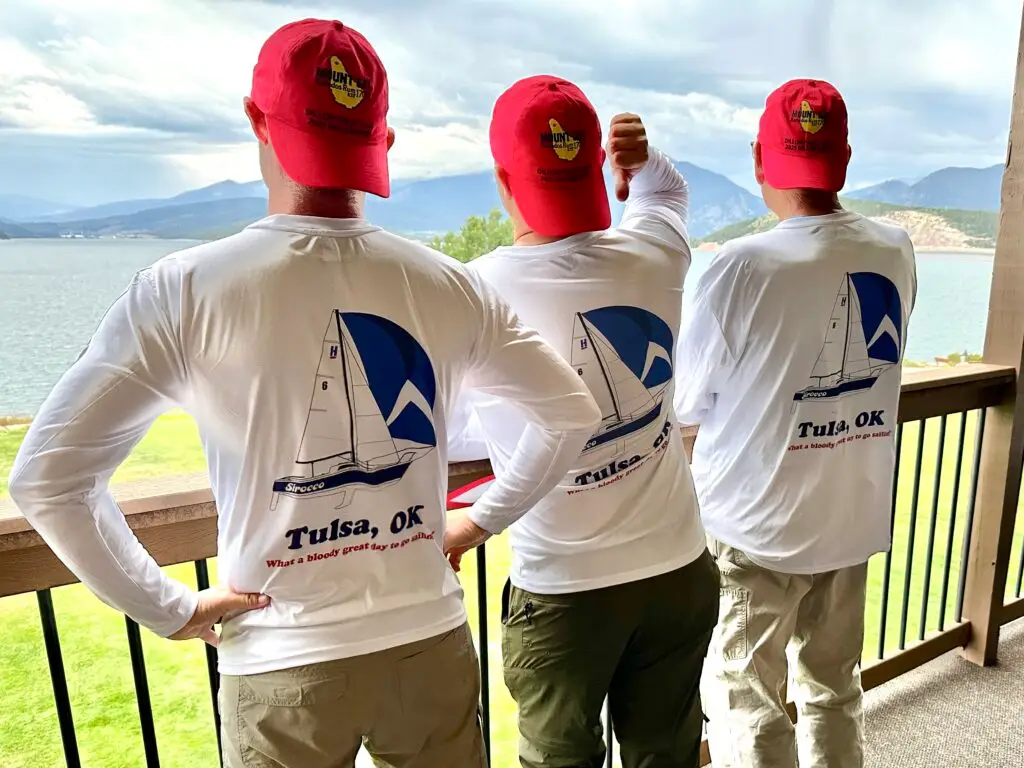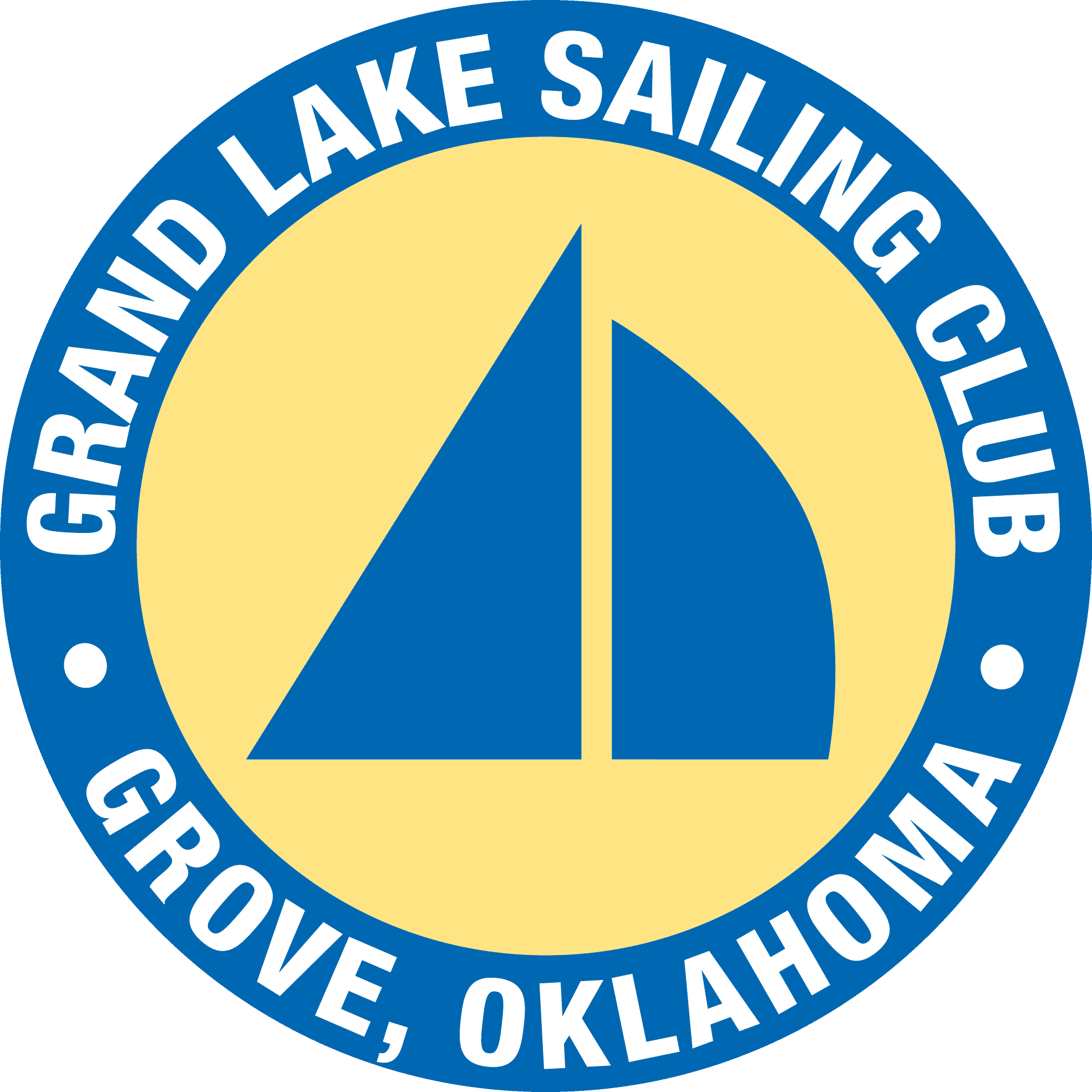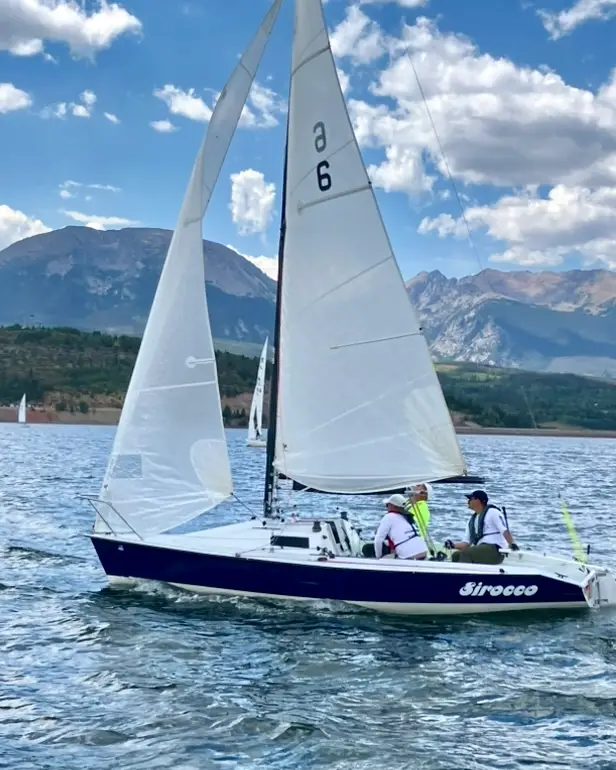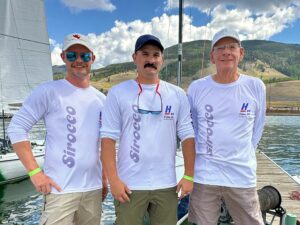
When you pull into Dillon, Colorado, the first thing you notice isn’t the boats, it’s the mountains. At 9,017 feet above sea level, Lake Dillon is ringed with jagged peaks that funnel winds down their valleys in every direction. Sailors call it one of the hardest race venues in the country. Some even say if you can survive Dillon, you can race anywhere.
The second thing you notice, if you live closer to sea level, is the thin air. The Dillon Open Regatta is the highest-elevation sailing regatta in the world. Each August, the Dillon Yacht Club hosts sailors from across the country for a weekend of racing at altitude. This year, from August 22nd to the 24th, the 2025 Dillon Open drew 43 boats across multiple fleets. The lake’s reputation is infamous: sudden 90-degree wind shifts, squalls that appear out of nowhere, and microbursts that can blast 50–70 knots in a matter of seconds. Combine that with thin mountain air that makes sail trim, and even breathing, harder, and you’ve got a regatta like no other.
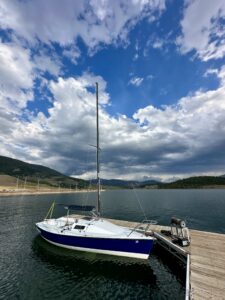
Our three-person crew trailered a Holder 20 up from Tulsa, Oklahoma. We came to the Rockies to represent GLSC and Windycrest, our crew holding memberships in both clubs. I crew foredeck, while our skipper, Evan Arter, and our trimmer, Claude Phelps, handle the back. I rolled in early Wednesday night, eager and a little nervous. For the last month and a half I’d been sending them stories and photos of past Dillon carnage, shredded sails, knockdowns, and boats punished by the mountains. Evan and Claude arrived Thursday morning at 6 a.m. after driving all night. No time for rest, we raised the mast, tuned the rig, and splashed the boat after sorting logistics with the marina.
As we coiled lines on the dock, a couple of locals in Dillon Yacht Club shirts wandered by. We traded introductions, shared where we’d hauled in from, and explained we were sailing a Holder 20, a question we’d end up answering many times over the weekend. (Next time, we joked, our crew shirts should just say in big block letters: “It’s a Holder 20.”) “You’re here and rigged? Then you have to race tonight,” they said with grins. Thursday night is beercan racing on Dillon, and apparently there was no backing out.
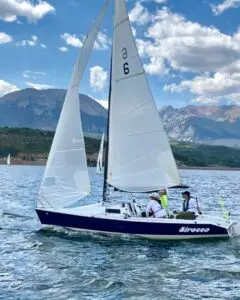
We figured, why not? Better to get our first taste of Lake Dillon’s notorious shifts in a casual race than to wait for the weekend’s main event. The club runs the same start line every Thursday, which meant both of those races were downwind starts. No spinnakers, just white sails and weird tactics as the fleet bore away at the horn. We placed well in both, walking away buzzing with excitement and not as intimidated by the winds as we’d feared. Back home in Oklahoma, we’re no strangers to shifty breezes, lake sailing there will teach you to tack on a dime. What was new, and frankly worrisome, was the speed at which Dillon’s shifts rolled through and the sudden microbursts that could hammer the fleet out of nowhere.
Friday, we went out for a test sail to break in new gear: fresh jib sheets, a new spinnaker halyard, new backstay controls, and a spinnaker we’d barely flown before. We practiced spin sets, douses, and mark roundings using one of the lake’s permanent marks. The afternoon brought a building breeze, with clouds and mountains scrambling its direction. The last douse turned into a comedy sketch: the new halyard ran faster than our old one, and the kite dumped straight into the water, scooping itself under the bow. Claude leapt forward to free the halyard from the head, while I scrambled to pull it under the boat and up the port side to stuff the wet nylon back into the bag. For a moment it looked like our slick new spinnaker would be another sacrifice to Lake Dillon, but we saved it. We laughed, tightened up our crew procedure for douses, and were grateful it happened in practice instead of the regatta.

Saturday morning brought the opening ceremony and four races in the PHRF B fleet (nine boats, ratings up to 200). The breeze filled quickly, and so did the drama. Race 1 gave us a slightly late but clean start, and the boat just felt fast. The crew clicked, and we sailed away with a first-place finish. Race 2 was nearly as good, we worked the shifts, kept our lanes, and took 3rd. As the wind built, we changed headsails from our 139 to the jib. Then Dillon showed its teeth. In Race 3, a bad tactical call and failure to cover the fleet dropped us to 8th. Race 4 was steadier, but in a tight pack, we crossed 5th.
After getting back to the docks we were offered a spin on a Viper 640, but that’s another story…
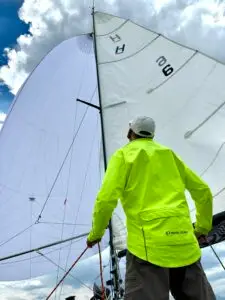
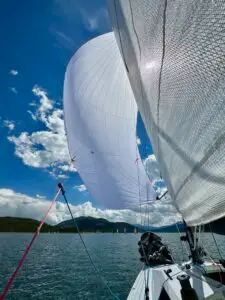
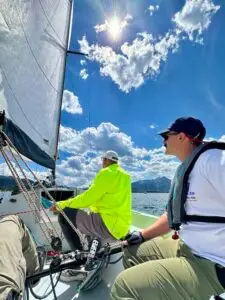
Sunday began calm, delaying starts. The finicky wind soon filled and we raced two more before weather rolled in on radar and the RC called it. We committed to our larger headsail for the day. Race 5 was redemption: another first-place finish, our second bullet of the weekend, and the only boat in our fleet to score two wins. The adrenaline from that one still lingers. But the final race humbled us again. At the second top mark, in wildly shifting winds, we had to throw in extra tacks just to clear. That cost us badly, and we finished 7th.
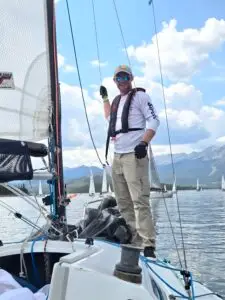
When the scores were tallied, 1st place in our fleet won with 16 points (finishes of 5, 2, 4, 2, 2, 1). A three-way tie for 2nd landed at 22 points. We ended 5th with 25, close enough to taste it, and to know that our 8th and 7th place finishes kept us off the podium.
Our crew’s debrief while waiting for the award ceremony was unanimous: consistency beats brilliance. The two bullets felt amazing, but Dillon rewards the boats that never dip below mid-fleet, not the ones with flashy highs and painful lows.
Still, for a first crack at the Dillon Open, we couldn’t have asked for more. The crew agreed it was some of the best sailing we’ve ever done. We learned hard lessons, shared big laughs, and proved we could win races in one of the trickiest venues in North America. The camaraderie on the docks, the backdrop of the Rockies, and the wild unpredictability of the lake made the experience unforgettable. And we got some red hats…
And yes, we’ll be back. Because once you’ve raced at 9,000 feet, with the mountains shifting the wind like a kaleidoscope, you can’t resist another round with Dillon.
(A special thanks to Leslie and Savannah for being the best race support crew team at the regatta!)
– Clint Baxter
